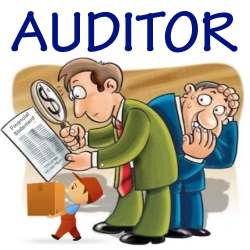How do an auditor verify Goodwill | Guidelines for Auditor
Table of Contents
What is a Goodwill?
Goodwill is an intangible asset. It is the value of the reputation of the firm It enables the firm to earn more than the normal rate of profit. It has no physical existence as such. It does not diminish in value with use. It has the potentiality of self-growth. It can be raised merely by book entries.
Under what circumstances Goodwill is calculated?
Goodwill is calculated and shown in the Balance Sheet only under the following circumstances:
1. At the Time of its Purchase: The amount of goodwill is equal to the difference between the total purchase price paid for the business and the net assets (i.e., Assets – liabilities) purchased.
2. At the Time of Revaluation of Whole of Assets: Sometimes, companies revalue whole of their assets and raise goodwill account in their books. In such cases also, the goodwill so raised will be shown in the Balance Sheet.
3. At the Time of Writing off the Capital Loss or the Debit Balance of Profit & Loss Account: Sometimes, the goodwill acquired by the company and written off as such has been later brought back to accounts to write off the debit balance in the Profit & Loss account or the capital loss which the company incurred subsequently.
4. At the time of Admission, Retirement or Death of a Partner in case of Partnership Firms: In case of partnership firms, goodwill is calculated and shown in the books when a new partner is admitted or an old partner dies or retires.
Guidelines for Auditors in verification of Goodwill
In case of purchase of the business, the auditor should verify it with the help of the agreement made with the vendor, which shows the price paid for it. However, if the amount of goodwill is not specifically mentioned, it is to be treated as the difference between the purchase price paid for the business and the net assets taken over.
In case of revaluation of assets, which has raised the goodwill account in the books of a company, the auditor should refer the basis on which the assets have been revalued. While in the case of goodwill, which has been written off but later brought back to write off capital loss or the debit balance of Profit & Loss Account, he should investigate the period over which the goodwill was written off. He should also ascertain the amount of goodwill. He should also see whether debtors as well as shareholders approved it by passing necessary resolutions in their meeting.
In the case of partnership firm, he should verify the Partnership Deed. He may also verify the changes made in the goodwill account from time to time based on the provisions made in the Partnership Deed.


